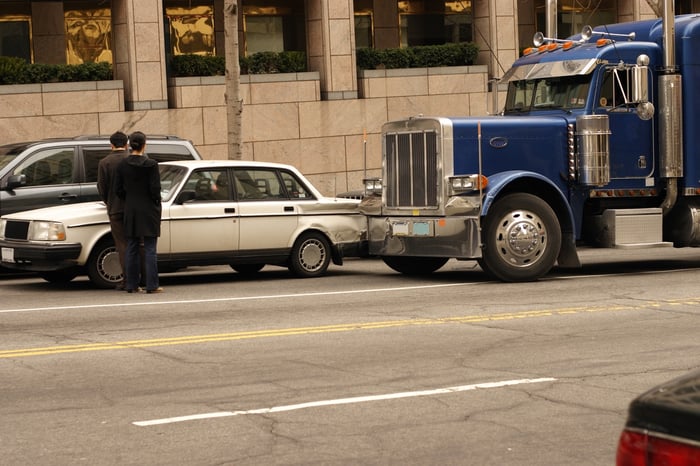
Best Practices for Diminished Value Claim Handling

As the frequency of Diminished Value claims rises each year, insurers are facing new and significant challenges. It’s not just the cost of a diminished claim to be considered here. There is valuable resource time that is spent during the claim handling process when your adjuster could be working on other more traditional claims.
If the claim goes to litigation, time and resources will become involved in that process as well.
What Are Diminished Value Claims
As an example, Steve got into an auto accident, and his left front and rear quarter panels were damaged as well as both driver and rear passenger doors. The other driver was at fault and admitted being responsible for the accident. Even though Steve’s car was repaired, if he tries to sell it, the resale value will be less because the car was in an accident. This is where the diminished value comes in.
The diminished value is the difference between this car’s resale value and the resale value of the same car had it not been in an accident. This amount varies greatly, depending upon such things as the make, model, and number of miles on the car.
According to a survey conducted by Auto Appraisal Group Inc, car dealers diminished a vehicle’s value by 15% to 50% after it required repairs due to an accident.
Some of the factors that impact the diminished value:
-
Year, make or model of the vehicle
-
Mileage on the vehicle
-
Use of OEM or aftermarket parts to repair the damage to the vehicle
During the claim handling process, Steve may ask the at-fault driver’s insurance company to be compensated for the diminished value. All states except Michigan allow claimants to collect this kind of compensation.
Handling Diminished Value Claims
In our example above, Steve may request to be compensated for the diminished value of his vehicle by the at-fault driver’s insurance carrier. Below are the steps we take during the claim handling process when a claimant requests to be compensated for diminished value:
-
Determine what the laws are for the state in which the accident occurred
-
Ask Steve to provide proof his repaired vehicle is worth less than before the accident
-
Investigate if the vehicle was involved in any prior accidents
-
Determine the diminished value using the diminished value calculation 17c
Diminished Value Can Be Confused With Market Value

Vehicle owners with high-end luxury or sports cars are probably aware of the term diminished value and what it means. They will most likely ask to be compensated for the diminished value if their vehicle was involved in an accident not their fault.
By filing a diminished value claim, the vehicle owner hopes to recover the difference between the value of the vehicle before the accident and its value after repairs have been made. However, since the vehicle was in an accident, the market value of the vehicle will be less than before the accident.
If Steve’s vehicle was not involved in any prior accidents, let’s assume it’s resale value was $30,000. Now that his vehicle has been in an accident, it may be worth only $24,000 after repairs. In this case, Steve would want to recover $6,000 by filing a diminished value claim. But it’s not as clear-cut as that.
Calculating the diminished value of a vehicle varies greatly depending on several factors including the manufacturer and type of vehicle.
High-end luxury vehicles are classified as such because they have certain upgraded features that economy class cars do not have. For example, Infiniti has incorporated technology in the suspension of their vehicles that is considered an upgraded feature. As a result, Infiniti vehicles are a top safety pick for 2017 because of the way the vehicle absorbs the shock of a collision. For this reason, Infiniti vehicles typically retain their value or have lower diminished value. If Steve’s car was an Infiniti with these types of features, the value of his car wouldn’t have decreased so much after the accident.
Diminished Value Used as a Settlement Tool
An insurance company is more likely to reimburse the diminished value when the claimant was not at fault in the auto accident. That’s not the only time diminished value comes into play. If the at-fault driver is uninsured, the non-responsible driver may submit a claim to their own insurance company. Even drivers who were responsible for the accident may file a claim with their insurance company. Chances are less likely that it will be covered, but it’s worth asking.
When a claimant files a diminished value claim and feels the amount the insurance company is willing to pay is too low, they may hire an attorney to help recover a higher amount. Depending upon the value of the car, this may not be worth pursuing.
Conclusion
By following best practices when handling diminished value claims, adjusters can spend less time handling these claims and minimize the cost of the claim. During the claim handling process for diminished value, it is important to take the necessary steps quickly to identify the facts and determine the value of the claim.
The diminished value of a vehicle varies greatly depending on several factors including the manufacturer and type of vehicle.
Diminished value can easily be confused with market value. Diminished value is the difference between the value of the vehicle before the accident, and its value after repairs have been made. Market value is how much a vehicle is worth. When a vehicle has been in an accident, the market value of that vehicle will typically always be less than before the accident.

